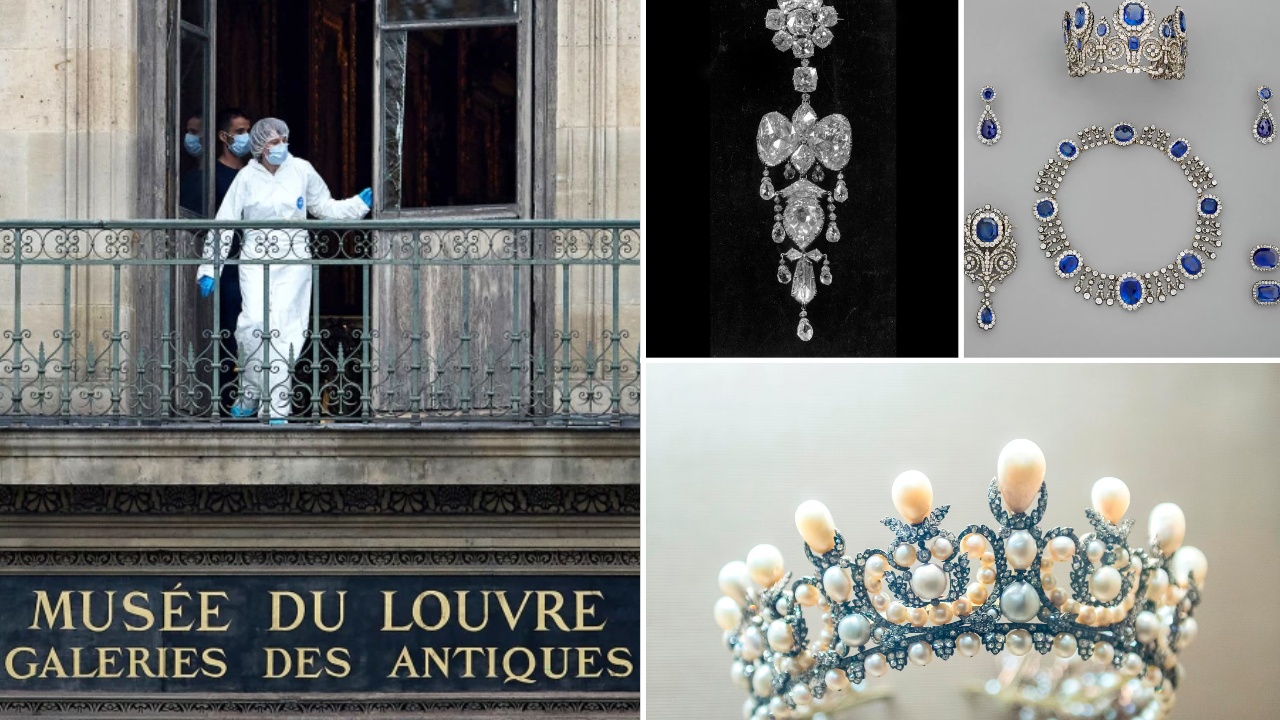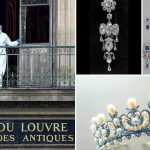In a scene straight out of a Hollywood thriller, a team of thieves pulled off one of the most audacious heists in the history of the Louvre Museum this past Sunday. In a lightning-fast operation conducted in broad daylight, the robbers made off with a king’s ransom in historic jewelry, leaving a trail of broken glass and serious questions about the security of one of the world’s most famous institutions. The brazen theft targeted the French crown jewels, striking at the very heart of the nation’s cultural heritage and making off with treasures of almost incalculable value.
The entire operation was executed with stunning precision and took just minutes to complete. Around 9:30 in the morning, shortly after the museum had opened its doors to the public, a team of four thieves arrived at the Louvre’s south side, facing the Seine River. Their key tool was a truck equipped with a mechanical lift, similar to the kind used by furniture movers to hoist items through apartment windows. Using this elevated platform, two of the robbers were raised to a first-floor balcony, where they used power tools like angle grinders to cut their way through a window and into the opulent Apollo Gallery.
Once inside, the masked thieves threatened the guards and swiftly smashed open two display cases containing what remains of the French crown jewels. They grabbed their priceless loot and made their escape back down the ladder to waiting motorbikes. From start to finish, the heist lasted between four and seven minutes. Although the museum’s alarms were triggered, the robbers managed to vanish into the streets of Paris before police could respond. In their haste, they dropped one of the most spectacular items—a diamond-and-emerald crown belonging to Empress Eugénie—which was later found damaged near the museum.
You Might Like: Daniel Naroditsky’s Cause of Death
A Stolen Empire: The Missing Jewels
In a minutes-long strike inside the world’s most-visited museum, thieves rode a basket lift up the Louvre’s facade, forced a window, smashed display cases and fled with priceless Napoleonic jewels. Here’s what to know. pic.twitter.com/HXQD2vPh5h
— The Associated Press (@AP) October 20, 2025
The thieves specifically targeted a collection of 19th-century jewelry with deep royal connections, taking eight precious items. The stolen pieces are not just valuable for their gemstones and gold, but for their immense historical significance, having been worn by French empresses and queens. The list of stolen items includes treasures from three notable women:
- Empress Marie-Louise: The thieves took an emerald necklace and a pair of matching earrings that were commissioned by Napoleon Bonaparte as a wedding gift for his second wife, Marie-Louise, in 1810. The necklace alone is set with a 13.75-carat center emerald and over a thousand diamonds.
- Empress Eugénie: Several items belonging to the wife of Napoleon III were stolen, including a reliquary brooch set with 94 diamonds and a spectacular “corsage bow” brooch adorned with nearly 2,500 diamonds. While her crown was dropped and recovered, a tiara from her collection, featuring hundreds of pearls and diamonds, was successfully taken.
- Queen Marie-Amelie and Queen Hortense: The heist also included pieces from a sapphire parure, or matching set, associated with the last queen of France, Marie-Amelie. The thieves made off with the tiara, the necklace, and one of the pair of earrings from this set, leaving the second earring behind.
The Real Value and an Uncertain Fate
Putting a price tag on the stolen jewels at Louvre is nearly impossible. French officials have described them as “priceless” and of “inestimable heritage value.” Their worth is tied to their unique place in French history and their impeccable provenance, representing the grandeur of the First and Second French Empires. However, experts fear that the thieves have no intention of preserving this history. The sad reality of such heists is that iconic, easily recognizable items are often broken down for their raw materials.
Chris Marinello, CEO of Art Recovery International, explained that the criminals will likely “break them up, melt down the valuable metal, recut the valuable stones, and hide evidence of their crime.” While the final sales price for the components would be a mere fraction of the intact artifacts’ cultural value, it would still be a considerable sum and, most importantly, virtually untraceable. This means that a piece of French history, a crown worn by an empress, could soon be reduced to a handful of anonymous gemstones on the black market.
The recovery of the dropped crown offers a glimmer of hope, but authorities are now in a race against time to find the Louvre thieves before the evidence—and the heritage it represents—is permanently destroyed.








